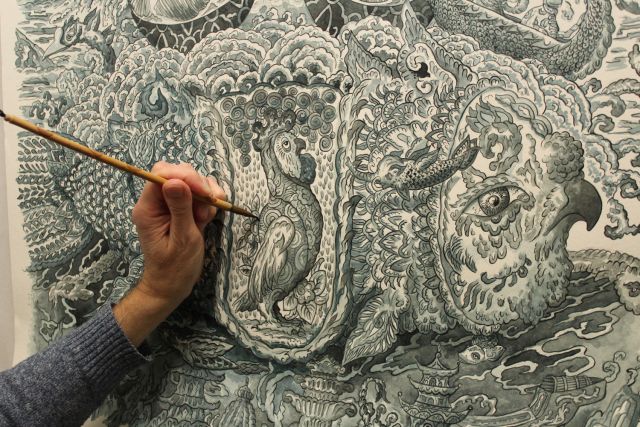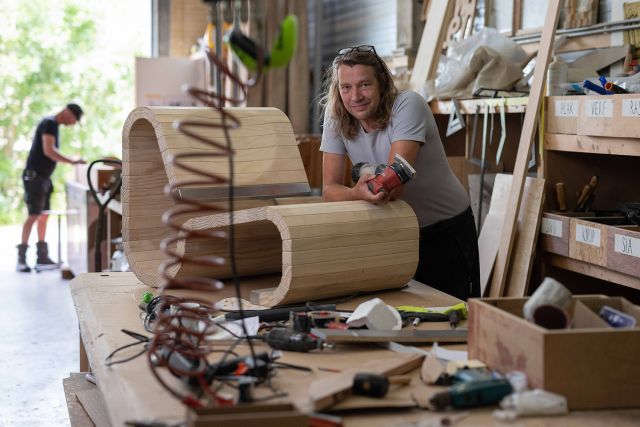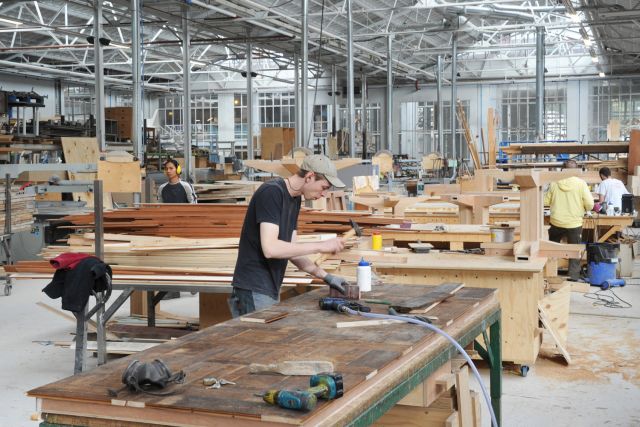This is a shiny handwoven wall hanging in portrait orientation. Evenly balanced diamond shapes make it hard to decide which colour is the background colour. The piece is woven on a damask loom, which makes it possible for each unit of four threads to show the warp colour (vertical pink) or weft (horizontal yellow).
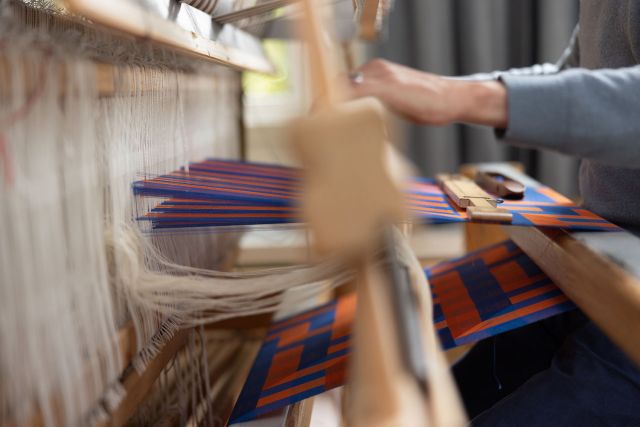

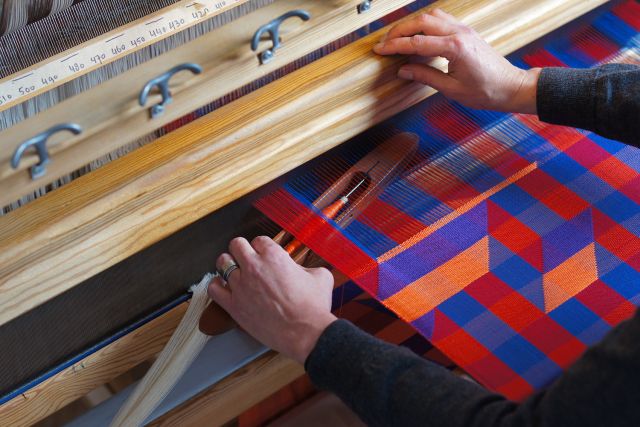
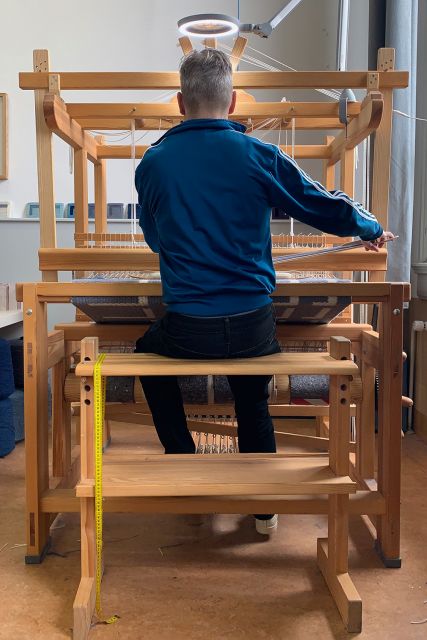
Theo Rooden
- Weaver
- Rotterdam, Netherlands
- Rising Star
By appointment only
+31 638311507
The geometry of textile
- • Theo opened his workshop in 2019
- • He uses algorithms and his own systems to create
- • He observes the everyday world to get inspired
Theo Rooden originally trained to be an industrial design engineer, and later took courses in graphic design. He moved from problem-solving as an industrial design engineer to more autonomy as a visual artist as a second career. “I remember that the moment I first sat at a loom in 2017, I had a great desire to master this with full dedication," he says. Theo learned weaving at De Ambachtelijke Weverij (Sytze Roos) and joined masterclasses there. “I started with some kitchen towels and scarves. I soon made the decision to only focus on artwork (wall hangings) and rugs. In my early weaving works, I already liked the colour interactions between warp and weft. A fascination that has stayed, and that always leads me to new ideas.”
Read the full interviewWorks
Photo: ©Theo Rooden

Photo: ©Theo Rooden
The composition of this handwoven rug shows black L-shapes on a grey background. There is a play of depth perception and illusory shadows. The weaving technique used is called four-end-block-weave. The weaving structure allows for colour blocking without blending of colours. The finishing is such that the rug is reversible. On the other side, the colours are reversed: grey shapes on a black background.

Photo: ©Theo Rooden
The composition of this handwoven rug shows purple L-shapes on an orange background. There is a play of depth perception and illusory shadows. The weaving technique used is called four-end-block-weave. The weaving structure allows for colour blocking without blending of colours. The finishing is such that the rug is reversible. On the other side, the colours are reversed: orange shapes on a purple background.

Photo: ©Amanda Rooden
This is a handwoven wall hanging showing an abstract geometric composition with horizontal and vertical stripes on a white background. The work could be labelled op-art, with depth suggested by the rhythm of the stripes and illusory grey shadows on the white background. The weaving technique used is double weave.

Photo: ©Amanda Rooden
This is a handwoven wall hanging showing an abstract geometric composition with horizontal and vertical stripes on a white background. The work could be labelled op-art, with depth suggested by the rhythm of the stripes and illusory grey shadows on the white background. The weaving technique used is double weave.





